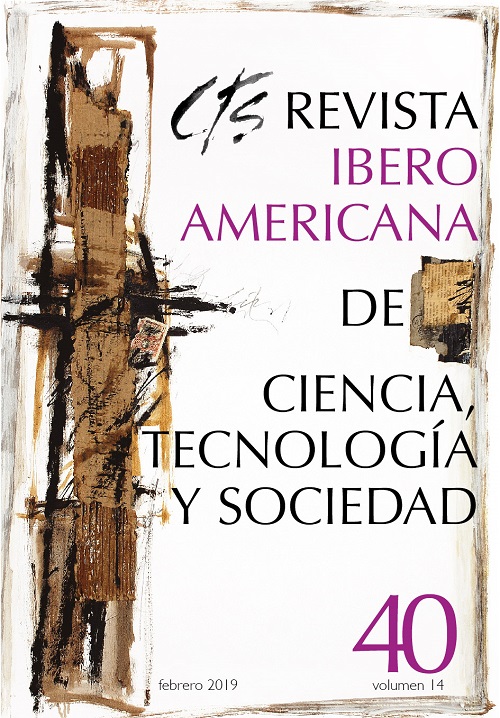San Francisco Declaration on Research Assessment
Keywords:
DORA, San Francisco Declaration on Research Assessment, Journal Impact Factors, altmetrics, research assessmentAbstract
Introduction and objective: There is a pressing need to improve the ways in which the output of scientific research is evaluated by funding agencies, academic institutions, and other parties. To address this issue, a group of editors and publishers of scholarly journals met during the Annual Meeting of The American Society for Cell Biology (ASCB) in San Francisco, CA, on December 16, 2012. Method: The group developed a set of recommendations, referred to as the San Francisco Declaration on Research Assessment. Results and Discussion: The Journal Impact Factor is frequently used as the primary parameter with which to compare the scientific output of individuals and institutions. The Journal Impact Factor has a number of well-documented deficiencies as a tool for research assessment: citation distributions within journals are highly skewed; the properties of the Journal Impact Factor are field-specific: it is a composite of multiple, highly diverse article types, including primary research papers and reviews; Journal Impact Factors can be manipulated by editorial policy and data used to calculate the Journal Impact Factors are neither transparent nor openly available to the public. Our recommendations focus primarily on practices relating to research articles published in peer-reviewed journals but can and should be extended by recognizing additional products, such as datasets, as important research outputs. These recommendations are aimed at funding agencies, academic institutions, journals, organizations that supply metrics, and individual researchers. Conclusions: A number of themes run through these recommendations: the need to eliminate the use of journal-based metrics, such as Journal Impact Factors, in funding, appointment, and promotion considerations; the need to assess research on its own merits rather than on the basis of the journal in which the research is published; and the need to capitalize on the opportunities provided by online publication (such as relaxing unnecessary limits on the number of words, figures, and references in articles, and exploring new indicators of significance and impact).Downloads
References
ADLER, R., EWING, J. y TAYLOR, P. (2008): Citation statistics. A report from the International Mathematical Union (IMU) in cooperation with the International Council of Industrial and Applied Mathematics (ICIAM) and the Institute of Mathematical Statistics (IMS), Joint Committee on Quantitative Assessment of Research. Disponible
en: https://www.mathunion.org/fileadmin/IMU/Report/CitationStatistics.pdf. Citado el 02/12/2018.
NATURE (2005): “Not so deep impact”, editorial, n° 435, pp. 1003–1004. Disponible en: https://www.nature.com/articles/4351003b. Citado el 02/12/2018.
ROSSNER, M., VAN EPPS, H. y HILL, E. (2007): “Show me the data”, J. Cell Biol., n° 179, pp. 1091–1092. Disponible en: http://jcb.rupress.org/content/179/6/1091. Citado el 02/12/2018.
ROSSNER, M., VAN EPPS, H. y HILL, E. (2008): “Irreproducible results: A response to Thomson Scientific”, J. Cell Biol., n° 180, pp. 254–255. Disponible en: https://www.ncbi.nlm.nih.gov/pmc/articles/PMC2213574/. Citado el 02/12/2018.
SEGLEN, P. O. (1997): “Why the impact factor of journals should not be used for evaluating research”, BMJ, n° 314, pp. 498–502. Disponible en: https://www.ncbi.nlm.nih.gov/pmc/articles/PMC2126010/pdf/9056804.pdf. Citado el 02/12/2018.
THE PLOS MEDICINE EDITORS (2006): “The impact factor game”, PLoS Med., vol. 3, n° 6, e291. Disponible en: http://journals.plos.org/plosmedicine/article?id=10.1371/journal.pmed.0030291. Citado el 02/12/2018.
VANCLAY, J. K. (2012): “Impact Factor: Outdated artefact or stepping-stone to journal certification”, Scientometrics, n° 92, pp. 211–238. Disponible en: https://link.springer.com/article/10.1007%2Fs11192-011-0561-0. Citado el 02/12/2018.
Downloads
Published
How to Cite
Issue
Section
License
All CTS's issues and academic articles are under a CC-BY license.
Since 2007, CTS has provided open and free access to all its contents, including the complete archive of its quarterly edition and the different products presented in its electronic platform. This decision is based on the belief that offering free access to published materials helps to build a greater and better exchange of knowledge.
In turn, for the quarterly edition, CTS allows institutional and thematic repositories, as well as personal web pages, to self-archive articles in their post-print or editorial version, immediately after the publication of the final version of each issue and under the condition that a link to the original source will be incorporated into the self-archive.











